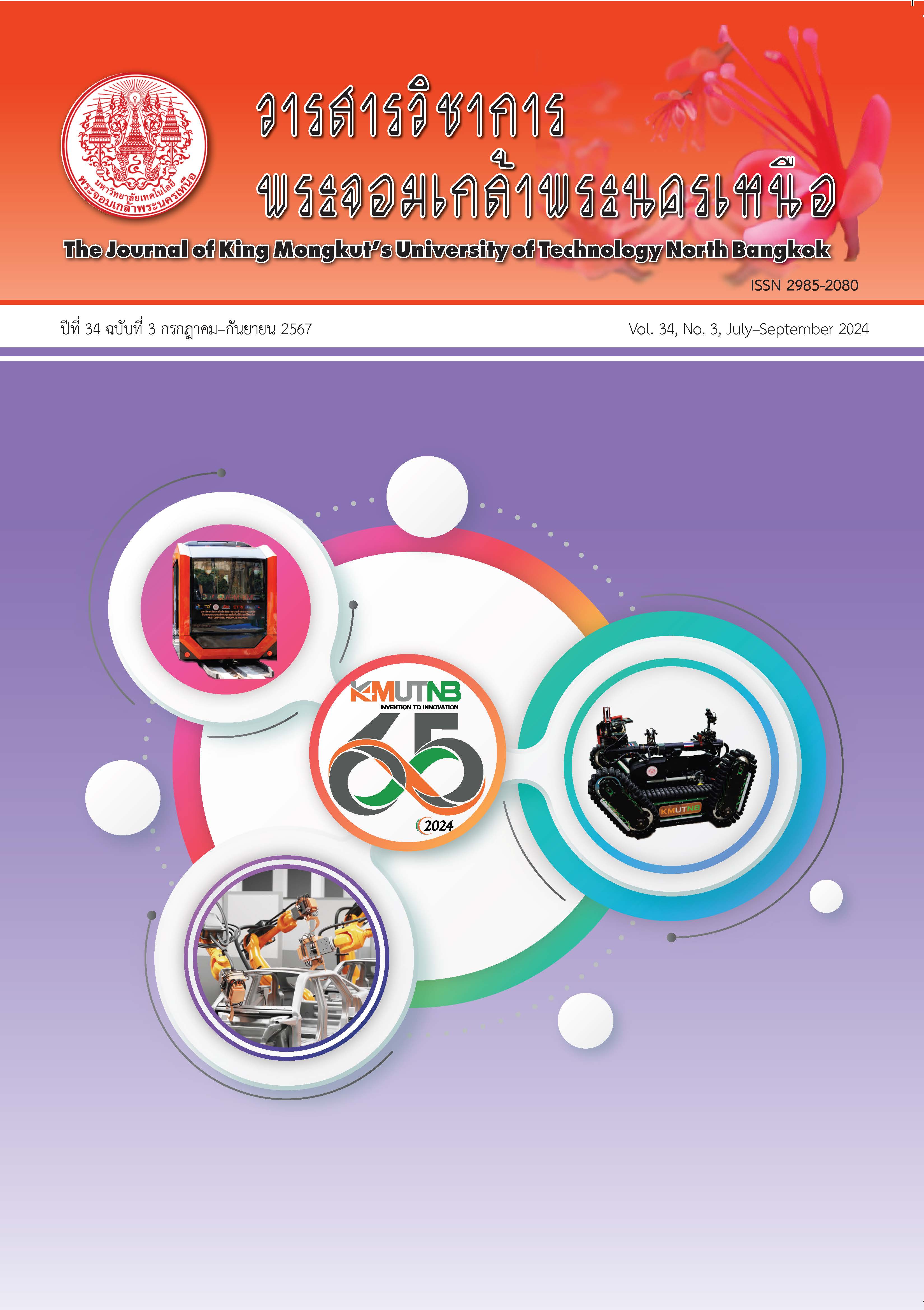Development of Paving Interlocking Block from Plastic Bottle Wastes with Dust Stone
Main Article Content
Abstract
This research aims to develop the interlocking concrete paving block from plastic bottle waste incorporated with stone dust to replace the aggregate. In comparison with the interlocking concrete paving block from plastic bottles normally using construction stone and sand, the plastic bottle waste was used instead of aggregates at 2%, 4%, 6%, 8%, and 10% by volume/aggregates with the water to cement ratio of 0.5. The properties of the interlocking concrete paving blocks were tested with the TIS. 827-1988 standard. Based on the curing age of 28 days, the results showed that the characteristics of both interlocking concrete paving blocks passed the specified standard. The water absorption was higher while the density decreased when more plastic bottle waste was replaced. The compressive strength of interlocking concrete paving blocks mixed with plastic waste incorporated with stone dust revealed a total average compressive strength of higher than 40 MPa from two out of five mixing ratios. The results of the thermal conductivity test and the surface temperature of the interlocking concrete paving blocks of both types showed no significant difference.
Article Details

This work is licensed under a Creative Commons Attribution-NonCommercial-NoDerivatives 4.0 International License.
The articles published are the opinion of the author only. The author is responsible for any legal consequences. That may arise from that article.
References
C. Charoennatkul, “Interlocking blocks containings oil plam ash and shells waste,” Journal of Community Development and Life Quality, vol. 2, no. 1, pp. 103–112, 2014 (in Thai).
N. Tanpaiboonkul, “Replacing cement by dust from rock crushing plant in interlocking block production,” Princess of Naradhiwas University Journal, vol. 9, no. 1, pp. 126–135, 2017 (in Thai).
Environmental Research Institute (ERI) (2018, Dec 10). Micro Plastics [Online]. (in Thai) Available: http://www.eric.chula.ac.th/ download/zwaste/Thon.pdf. (in Thai)
I. Almeshal, B. A. Tayeh, R. Alyousef, H. Alabduljabbar, and A. M. Mohamed, “Ecofriendly concrete containing recycled plastic as partial replacement for sand,” Journal of Materials Research and Technology, vol. 9, no. 3, pp. 4632–4643, 2020.
B. Jaivignesh and A. Sofi, “Study on mechanical properties of concrete using plastic waste as an aggregate,” presented at the 2nd International Conference on Civil Engineering and Infrastructural Issues in Emerging Economies, Thanjavur, India, 2017.
A. K. Singh, V. Srivastava, and V. C. Agarwal, “Stone dust in concrete: effect on compressive strength,” International Journal of Engineering and Technical Research, vol. 3, no. 8, pp. 115–118, 2015.
P. Khamput and K. Suweero, “Development of interlocking concrete paving block product mixed with colored polyethylene terephthalate plastic bottle from post-consumer waste,” Journal of Engineering RMUTT, vol. 18, no. 1, pp. 81–89, 2020 (in Thai).
Standard Test Method for Bulk Density (Unit Weight), and Voids in Aggregate, Annual Book of ASTM Standards 04. 02, C29, 2012.
Standard Test Method for Density, Relative Density (Specific Gravity), and Absorption of Coarse Aggregate, Annual Book of ASTM Standards 04. 02, C127, 2012.
Standard Test Method for Density, Relative Density (Specific Gravity), and Absorption of Fine Aggregate, Annual Book of ASTM Standards 04. 02, C128, 2012.
Standard Specification for Concrete Aggregates, Annual Book of ASTM Standards 04. 02, C33, 2018.
P. Khamput and K. Suweero, “Development of paving block for reducing the exterior surface temperature,” presented at the 16th National Convention on Civil Engineering, Chonburi, Thailand, 2011 (in Thai).
Interlocking concrete paving block. Thai Industrial Standards Institute (TISI) no. 827,- 1987 (in Thai).
Hollow load-bearing concrete masonry unit, Thai Industrial Standards Institute (TISI) no. 57-1990, 1990 (in Thai).
Standard Test Method for Steady-State Thermal Transmission Properties by Means of the Heat Flow Meter Apparatus, Annual Book of ASTM Standards 04. 06, C518, 2012.
P. Jindaprasert and C. Jaturapitakkul, Cement, pozzolan, and concrete. 7th ed. Bangkok: ACI Partners with Thailand Concrete Association, 2012. (in Thai)
N. Saikia and J. Brito, “Waste polyethylene terephthalate as an aggregate in concrete,” Materials Research, vol. 16, no. 2, pp. 341–350, 2013.
P. Chawakitchareon and N. Nualswan, “Utilization of paper label waste for making interlocking concrete paving block by using limestone powder-cement as binder,” The Journal of KMUTNB, vol. 22, no. 1, pp. 99–106, 2012 (in Thai).
A. Shalaby, A. Ward, A. Refaee, S. Messieh, K. Nour, D. Nashar and H. Zayed, “Compressive strength and electrical properties of cement paste Utilizing waste polyethylene terephthalate bottles,” Journal of Applied Sciences Research, vol. 9, no. 7, pp. 4160–4173, 2013.
S. Haruehansapong, A. Neramitkornburee, and W. Kroehong, “Workability, mechanical properties and sulfate resistance of self compacting concrete with ternary blended cementitious materials,” The Journal of KMUTNB, vol. 31, no. 4, pp. 685–699, 2021 (in Thai).
P. Jittabut, “The mechanical properties and thermal conductivity of concrete block from agricultural wastes,” The Journal of KMUTNB, vol. 29, no. 2, pp. 342–351, 2019 (in Thai).
O. Yazoghli, R. M. Dheilly, and M. Queneudec, “The valorisation of plastic waste: thermal conductivity of concrete formulated with PET,” presented at the 1st International Conference on Engineering for Waste Treatment, Albi, France, 2005.
S. Kumar and M. Bishnoi, “Effects of high density polyethylene (HDPE) and polyethylene terephthalate (PET) on performance of flexible pavement,” Journal of Xidian University, vol. 14, no. 9, pp. 1227–1236, 2020.

